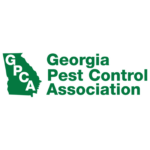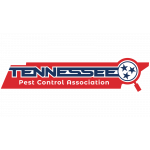Identifying and Managing Common Cockroaches in Your Home
Cockroaches are one of the most persistent pests homeowners face. Their ability to adapt and thrive in various environments makes them difficult to eliminate once they establish a presence. Not only are cockroaches unsightly, but they can also pose health risks, carrying bacteria and triggering allergies. But before you can effectively tackle a cockroach problem, you need to know what you’re dealing with.
This guide will help you identify common cockroaches found in homes, understand their habits, and learn actionable steps to keep them out.
Why Identifying Cockroach Species Matters
Knowing which cockroach species has invaded your home is crucial. Each type differs in its behavior, preferred environment, and methods of control. For example, a treatment plan for the larger American cockroach won’t work as effectively for the smaller German cockroach, which reproduces much faster.
By correctly identifying the type of cockroach, you can tailor your pest control strategy and address the problem more efficiently.
Common Cockroaches in the Home
1. German Cockroach (Blattella germanica)
German cockroaches are perhaps the most troublesome and widespread household pests. They are light brown with two dark stripes running parallel down their backs.
- Size: 0.5 to 0.6 inches long
- Habitat: Warm, humid areas, typically kitchens and bathrooms
- Key Traits:
- Reproduces rapidly, with females capable of producing hundreds of offspring in their lifetimes.
- Thrive in proximity to food and moisture.
- Signs of Infestation:
- Egg cases (oothecae) attached to surfaces or left in hidden areas.
- Droppings resembling black pepper specks near food storage areas or appliances.
2. American Cockroach (Periplaneta americana)
The American cockroach is the largest of the common cockroaches and often referred to as a “palmetto bug.” Its reddish-brown body is complemented by a yellowish figure-eight pattern on its head.
- Size: Up to 2 inches long
- Habitat: Dark, damp places such as basements, sewers, and floor drains.
- Key Traits:
- Prefers decaying organic matter but will eat various food items.
- Can survive for a short time in cooler environments.
- Signs of Infestation:
- A musty odor in infested areas.
- Shed skins or droppings (oval-shaped and ridged).
3. Oriental Cockroach (Blatta orientalis)
Known for their glossy, nearly black appearance, Oriental cockroaches are another common pest, often nicknamed “water bugs.”
- Size: 1 to 1.25 inches long
- Habitat: Cool, damp areas such as basements, under sinks, or near leaking pipes
- Key Traits:
- Slow movers compared to other cockroaches.
- Less likely to travel far from their hiding spots.
- Signs of Infestation:
- Strong, unpleasant odor.
- Sightings near water sources.
4. Brown-Banded Cockroach (Supella longipalpa)
Distinct from the others, the brown-banded cockroach has two lighter bands across its body and is adaptable to drier areas.
- Size: About 0.5 inches long
- Habitat: High, dry places such as closets, picture frames, and upper cabinets
- Key Traits:
- Prefers warmer temperatures than other species.
- Often found far from typical water sources.
- Signs of Infestation:
- Tiny droppings often mistaken for dust.
- Light-colored egg cases on furniture or walls.
Health Risks Associated with Cockroaches
Cockroaches in your home aren’t just unpleasant; they can also pose serious health risks:
- Allergies and Asthma: Cockroach droppings, saliva, and shed skins can trigger allergies or worsen asthma, especially in children.
- Disease Spread: They are known to carry bacteria like E. coli and Salmonella, contaminating food and surfaces.
- Food Contamination: Even a small infestation can spoil food and compromise hygiene.
Effective Ways to Prevent and Manage Cockroach Infestations
1. Maintain Cleanliness
- Clean up spills and crumbs immediately.
- Regularly wipe down countertops, tables, and other food preparation surfaces.
- Store food in sealed containers, including pet food.
2. Eliminate Moisture Sources
- Fix leaking pipes, faucets, and other plumbing issues.
- Use a dehumidifier in damp areas like basements.
- Ensure proper ventilation in kitchens and bathrooms.
3. Seal Entry Points
Cockroaches can sneak inside through the smallest cracks and gaps. Use weather stripping, caulk, or other sealants to block these entry points.
- Check door and window frames for any signs of gaps.
- Seal holes around utility lines, vents, and wall crevices.
4. Use Baits and Natural Repellents
- Gel Baits: These are an effective option for targeting cockroach populations hidden behind walls or under appliances.
- DIY Natural Repellents:
- Mix equal parts baking soda and sugar and leave it in infested areas. The sugar attracts cockroaches, while the baking soda kills them when ingested.
- Place bay leaves or cucumber slices in areas you want to deter them—cockroaches dislike their smell.
5. Monitor with Sticky Traps
Sticky traps help identify the type of cockroach and the severity of the infestation. Place them in high-traffic areas such as corners of rooms and under sinks.
6. Call Professional Pest Control
If an infestation feels like it’s beyond what you can manage, don’t hesitate to call in professional pest control experts. They have specialized tools and treatments to eliminate even the most stubborn roach problems safely and effectively.
Building a Long-Term Defense Against Cockroaches
Once you’ve tackled an infestation, prevention is key to ensuring it doesn’t return. Incorporate regular cleaning and maintenance into your routine to create an environment that’s inhospitable to cockroaches.
Ultimately, the best defense is a combination of vigilance and proactive measures. Don’t wait to act upon signs of a potential invasion—early intervention can save you time, effort, and discomfort in the long run.






